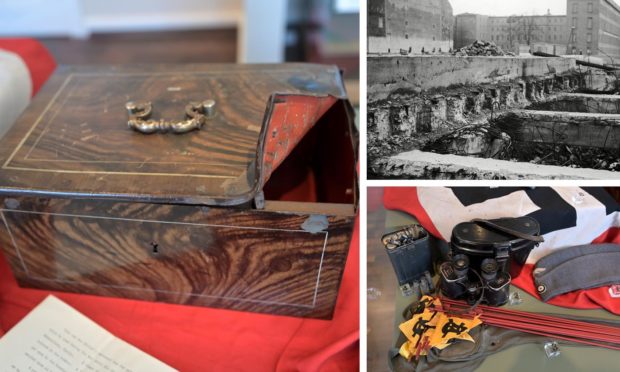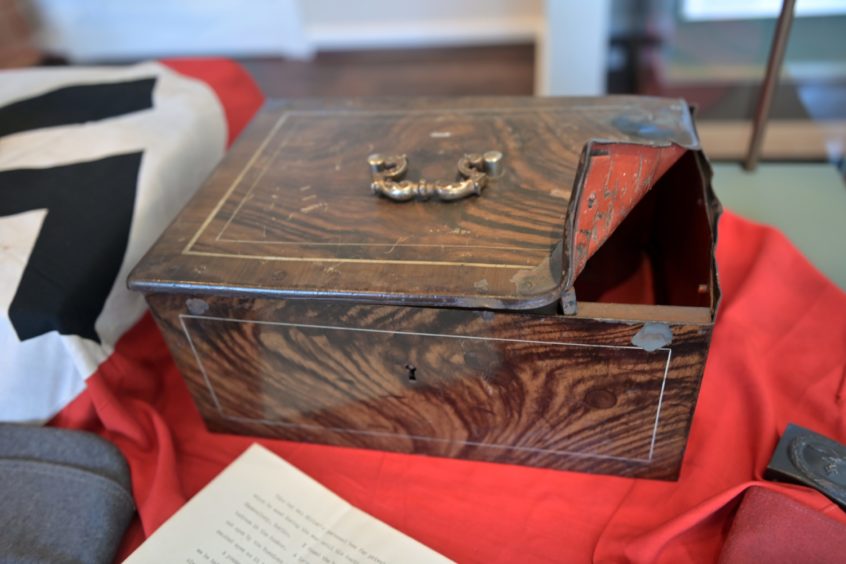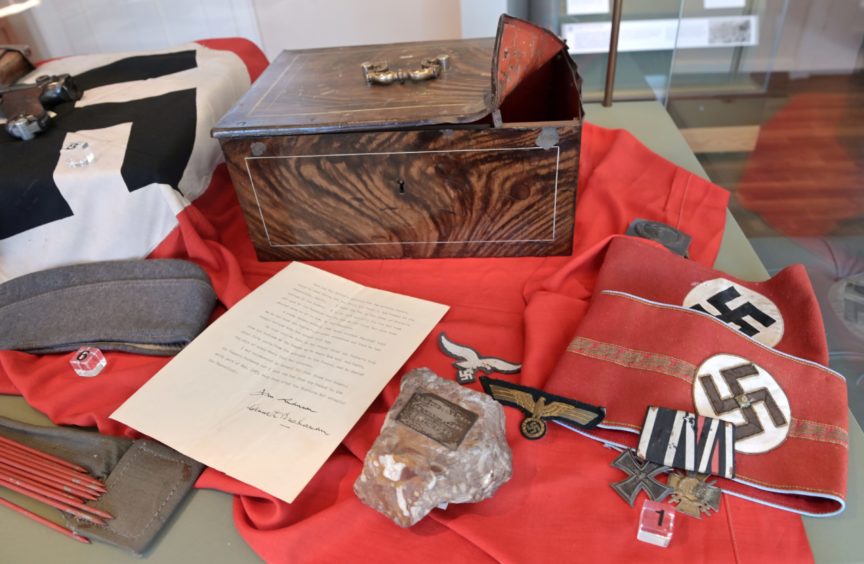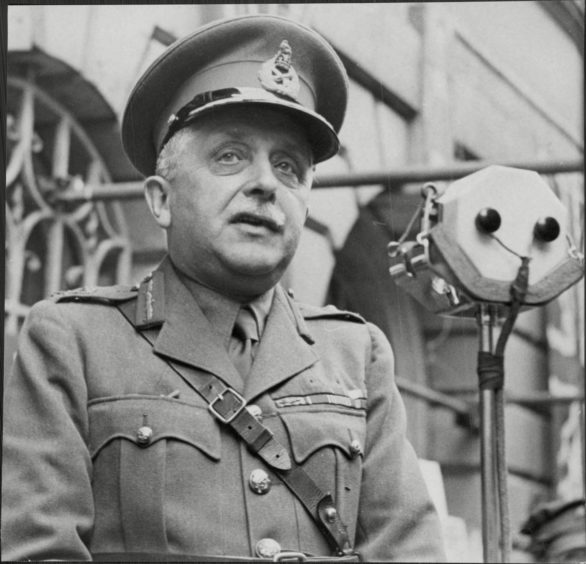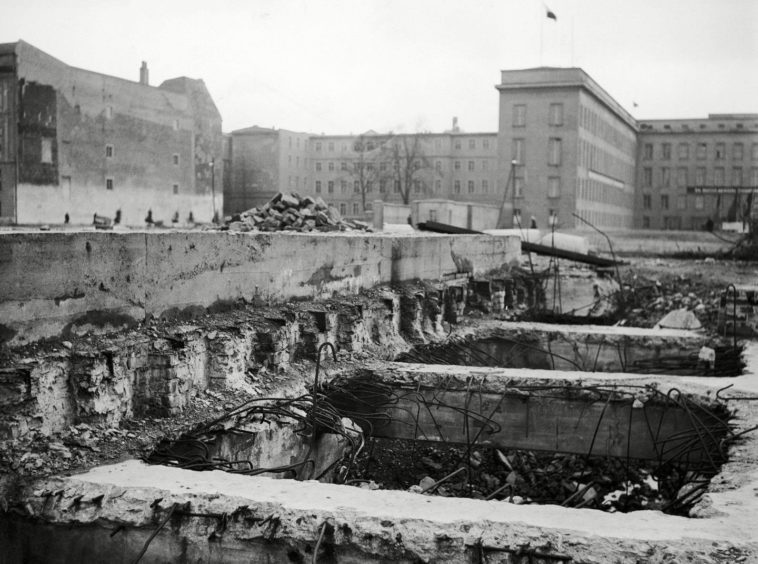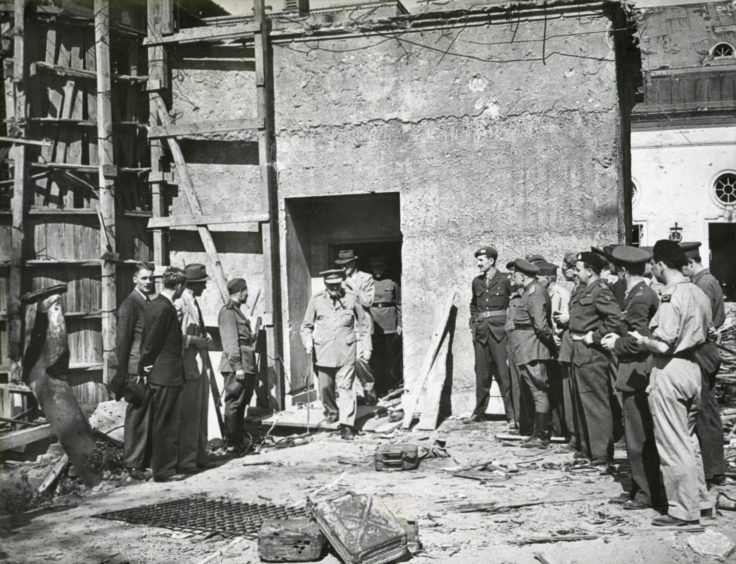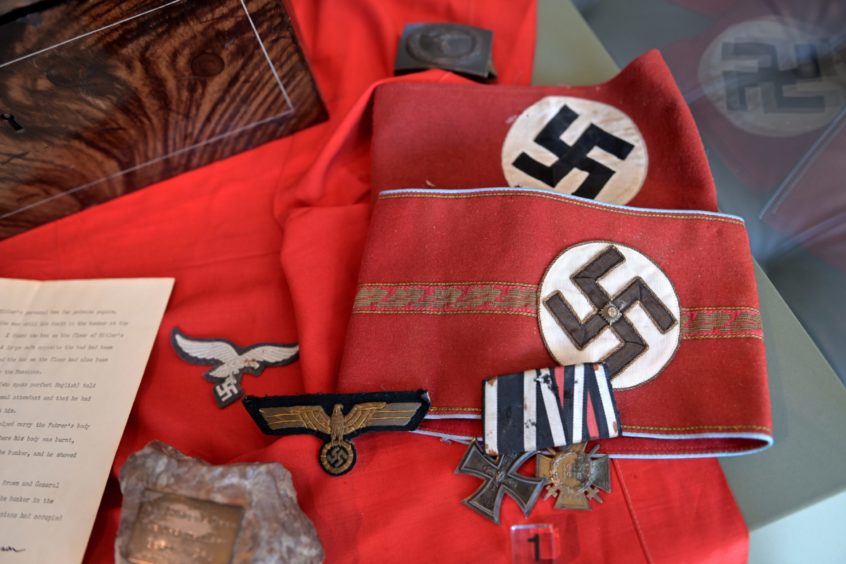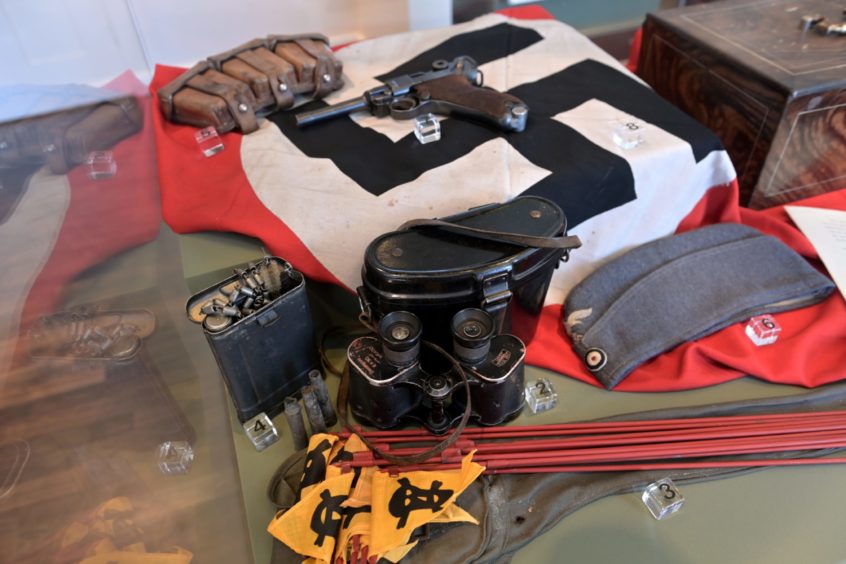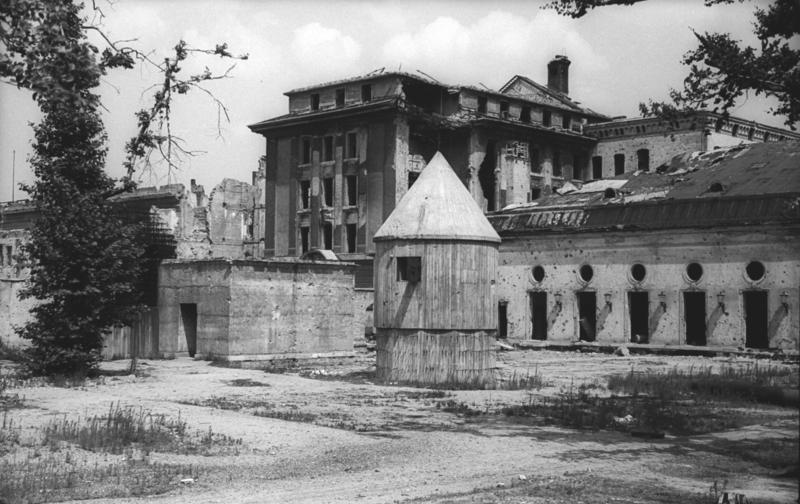Amid all the chaos in Berlin at the end of war, it seems astonishing that one of the most spine-chilling objects from the Third Reich should find its way to the Highlands.
Hitler’s personal despatch box sits in a case in the Highlanders’ Museum in Fort George, surrounded by other Nazi memorabilia – spoils of war for the soldiers on the scene at the time.
The box was taken from Hitler’s bedroom not many days after his suicide, in the messy, bloody wreckage of his Führerbunker, gouged out 50ft below the Reich Chancellery.
It looks like a soldier has taken his knife to it and partially hacked it open before peeling it back to reveal- alas, we simply don’t know now, we can only imagine.
The box, and a letter of authenticity were gifted to the museum by the wife of Lt Col Ian Forest Anderson, MC, OBE.
The letter reads: “This box was Hitler’s personal box for private papers, which he used during the war until his death in the bunker at the Chancellery, Berlin. I found the box on the floor of Hitler’s bedroom in the bunker. A large safe opposite the bed had been cut open by the Russians and the box on the floor had also been smashed open as it is now, by the Russians.
“A young German orderly (who spoke perfect English) told me he had been the Führer’s personal attendant and that he had always carried this box around with him.
“He also told me that he had helped carry the Führer’s body from his bedroom in the bunker up to where his body was burnt, about fifty yards from the entrance to the bunker, and he showed the pile of ashes where this had occurred.
“I was accompanied by General Sir John Brown and General Sir Kenneth Buchanan and I took the box from the bunker in the early part of May, 1945, very soon after the Russians had occupied the Chancellery.”
The letter is signed by ‘Ian Anderson’ and ‘Kenneth Buchanan’.
What Lt Col Ian Anderson and Major General Sir Kenneth Gray Buchanan, CB CMG DSO were doing at the Chancellery in early May isn’t clear.
They had both served as Seaforth Highlanders in World War One, and at the time both held high positions on the Council of Voluntary War Workers in North-West Europe.
It’s thought they could have been there to set up assistance to the German people post surrender.
The Russians had made it to Berlin on April 21, 1945, holding the city siege and finally pushing Hitler over the edge to take his own life on April 30.
Hitler’s final days
Writing for Historic Newspapers, journalist Tom Matthews gives a detailed account of the final days in the Führerbunker.
On April 20, the leaders of Hitler’s regime met for the last time, “among naked lightbulbs, a failing water supply and the rancid smell of human waste.”
Eight days later, he would marry Eva Braun “in a hastily prepared ceremony in a small map room, where Goebbels and Martin Bormann (head of the Party Chancellery and Hitler’s private secretary) bore witness.
“Having declared themselves of pure Aryan descent and free of any hereditary disease, Hitler and Braun were pronounced husband and wife. They remained so for less than 40 hours. Hitler’s last days were upon him…
“At 5am on the 30th April, the bunker residents were woken by artillery fire. Within the hour, Hitler, who was sat bleary eyed in a dressing gown and slippers, was informed they were just a few hours from defeat. At around 2pm, Hitler had his last meal. ‘The time has come,’ he said as he rose, ‘it’s all over.’ ”
He and Braun killed themselves in his bedroom at around 3.30pm.
Their bodies were taken outside, doused in fuel and burned.
Piece of Hitler’s desk
Back in the Highlanders’ Museum, a smooth, pale chunk of rock on display alongside the despatch box turns out to be part of Hitler’s marble desk, taken from the Bunker by Lt Col Richard Broad MC of the Seaforths.
History relates that the desk had been smashed to pieces by the Russian soldiers.
Also in the case are a set of German insignia and medals taken by Company Sergeant Major W Gordon, 2nd Batallion Seaforth Highlanders, and German binoculars taken by a member of the 5th Batallion.
More loot on display is a minefield marker set taken by the 6th Bn Seaforth Highlanders from German troops at Lubeck, 1945.
Also a German Luftwaffe cap taken by the 5th Camerons, along with German ammunition pouches, a P.08 Luger pistol and a Nazi flag.
Two Swastika emblazoned arm bands in the cabinet have retained their vibrant colour down the decades.
People doubted Hitler was dead
It seems curious now, but at the time and for many years afterwards, people around the world doubted that Hitler really was dead.
On May 2, the Lancashire Evening Post reported: “The announcement of Hitler’s death by the Germans has by no means been accepted everywhere as a factual statement.
“Both Moscow and neutral sources express serious doubts today, whether Hitler has really died.
“There is however unanimous opinion, shared by informed observers in Britain and American, that if Hitler really died, he certainly did not die yesterday afternoon at his command post in the Berlin Chancellery. [He had in fact died two days earlier]
“Moscow will only be satisfied of the truth of the German radio announcement if the body can be found and identified.
“Many people there are saying: ‘Hitler is not dead. He has run away.’
“Up to noon today no provisions for Hitler’s funeral had been announced to the German public.
“Nor has a state of mourning been proclaimed in what remains of the Reich.”
The Press and Journal of Friday August 3, 1945 reported that Ernest Bevin, minister of labour and national service during the war, was not sure that Hitler was dead.
The special correspondent writes: “Mr Bevin went down into Hitler’s shelter. ‘It is no better than any the Government had at home,’ was his judgement.
“Mr Bevin belongs to the school that is not entirely satisfied that Hitler is dead.
“ ‘Until Hitler can be proved as dead as Kitchener then the Germans will not be convinced,’ he said. “
British Intelligence probe
By November 2, The Northern Whig was trying to put the matter to rest, reporting:
‘Hitler IS dead: Findings of British Intelligence Probe’ and detailing the events of April 30 as they are now accepted.
“Months of investigation by British Intelligence officers have led to these conclusions, embodied in a long report made public last night and entitled ‘The Last Days of Hitler and Evan Braun’.
“Hitler finally realised that the war was lost on April 20 and from the day never left his bunker.
“The report is compiled from evidence taken from generals and politicians who saw him after that date, members of the chancellery staff, women secretaries, guards and others…
“The report concludes: ‘The evidence is not complete, but it is positive, circumstantial, consistent and independent. There is no real evidence whatever to support any theories which presuppose Hitler is still alive.’”
More like this:
Jean was the World War Two codebreaker who loved a good puzzle
The Scots women who translated Adolf Hitler’s will
How a Scots girl interned in Germany turned to Hitler to sanction her marriage
